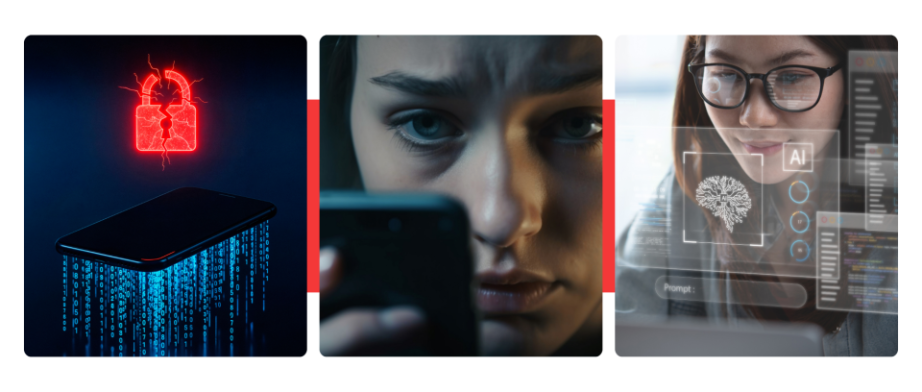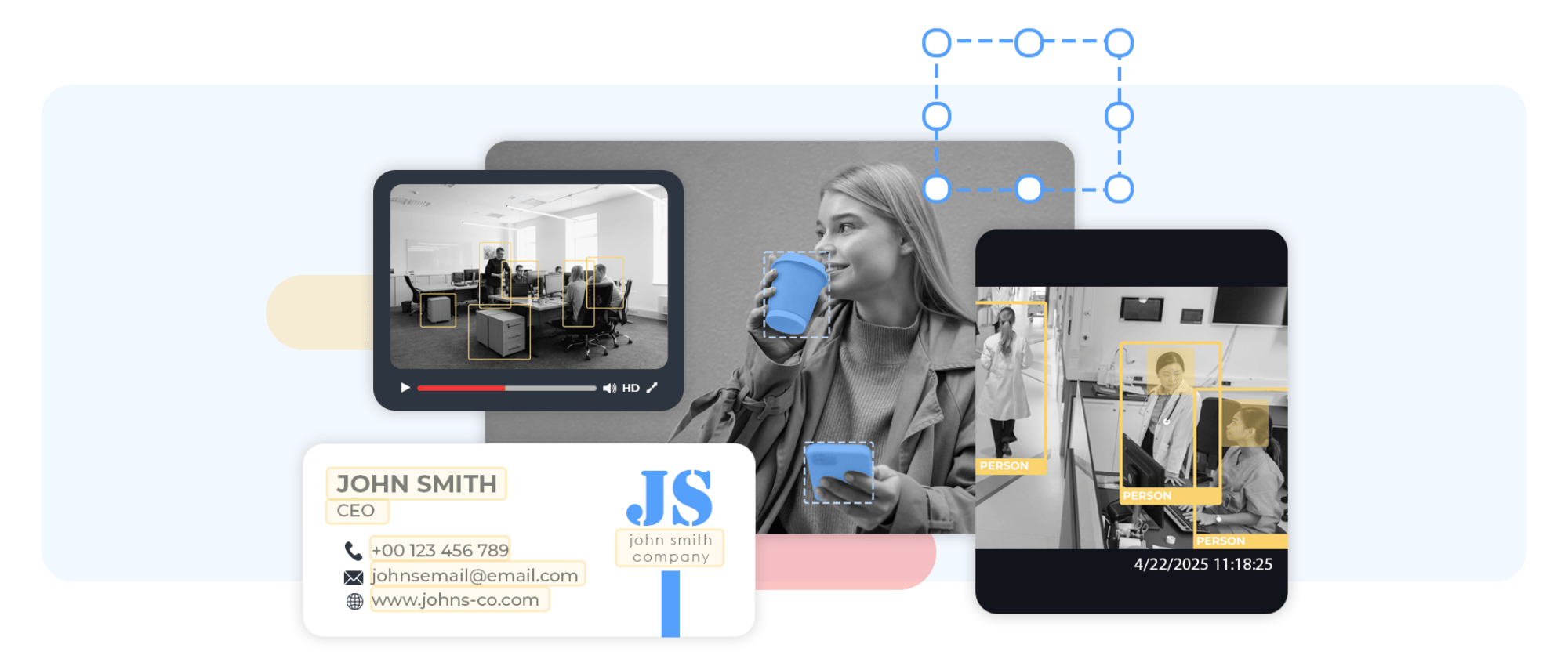Using hyper-personalisation in the company’s Customer Experience strategy can be a game-changer for building trust and loyalty with consumers and turning them into valued advocates for products and services. By implementing this approach, businesses can improve buyer satisfaction, drive retention, increase revenue growth, and enhance brand equity. With today’s customers expecting personalised interactions that cater to their individual needs and preferences, failing to provide customised care and attention, including individualised experiences across multiple touchpoints, could cause them to turn to competitors.
According to a McKinsey & Company report about customer care hyper-personalisation*, companies should prioritise personalisation in their overall CX strategy to meet consumer expectations. This transformation should apply to both digital and /or direct contact channels. The sooner, the better.
Let’s delve deeper into the concept of hyper-personalisation, then.
The role of data in CX hyper-personalisation
One of the key ideas behind Customer Service hyper-personalisation is a – comprehensive understanding of buyers’ behaviours and expectations. This is not achievable without insightful data covering every possible interaction with buyers. To offer truly bespoke care and support, companies need to regularly gather information from the various sources available, such as customer support channels, social media, and websites, in interactions with agents and subject all this precious data to sentiment analysis.
“An effective way to collect data in Customer Support services is to incorporate the Voice of the Customer metrics into CX processes and survey channels. Tools like Customer Satisfaction Score (CSAT), Net Promoter Score (NPS), and Customer Effort Score (CES) can help you assess the satisfaction of your clients with your products and services, measure their loyalty to your organisation and determine the effort required to resolve issues or answer questions” – Iulian Bacain, Sales and Marketing VP at Conectys, says.
Using customer data to create personalised experiences
By collecting and analysing customer data, companies can gain a better understanding of each individual customer and tailor the customer experience to their unique needs and preferences. These can cover, for instance:
- demographic data: information about customers’ age, gender, location, and other characteristics,
- behavioural data: purchase histories and actions taken, such as search terms used and websites visited and product usage patterns,
- preference data: information on specific preferences and interests regarding products and content,
- interaction data: history of interactions, such as the questions or issues raised,
- social media data: information that customers have shared on social media platforms about your company and products.
Ethical considerations regarding the data
While hyper-personalisation can be highly effective in improving customer satisfaction and retention, it also presents several challenges regarding data management and privacy concerns.

First and foremost, hyper-personalisation requires that a large amount of data being collected, stored, and analysed. Managing this complex data can be time-consuming and requires sophisticated tools and technologies that ensure accuracy and reliability.
The protection and security of customer data should always be a primary concern for any company, whether they handle customer support internally or outsource it. Customers have the right to expect their data to be collected, stored, and used securely. They should also be informed about what data is collected and why and have the choice to opt out of the data collection process completely if they prefer. To guarantee that these rights are respected, organisations and their outsourcing partners must be transparent about data collection practices. Customers should treat all customers equally, collect only strictly necessary data, and avoid deploying manipulation or invasiveness in data-driven targeted marketing or profiling practices.
When delegating the services to a third party, for example, a BPO partner, it is essential to ensure a complete alignment with your practices regarding relevant laws and regulations pertaining to data protection and privacy, such as, for instance, the General Data Protection Regulation (GDPR) in the European Union. The Customer Support services provider is also obliged to secure adequate security measures to protect customer data from unauthorised access or breaches. This includes implementing robust security protocols and regularly testing and updating them to stay ahead of potential threats.
Data analysis made easier with AI
Artificial Intelligence techniques like machine learning and deep learning can speed up and improve customer data analysis, allowing for more informed decision-making. Additionally, the use of natural language processing simplifies the comprehension of incoming inquiries.
This innovation enables you to:
- better understand how customers are likely to respond to different marketing campaigns, products, or services, in addition to identifying groups of buyers with similar characteristics,
- make accurate predictions about customers’ future behaviour and expectations,
- tailor the support experience to the individual needs,
- address better-tailored recommendations, messaging, and communication which is finely tuned to individual needs,
- engage with your buyers more effectively to enhance the success of marketing and sales efforts.
In addition to these functions, Artificial Intelligence can be used to improve Customer Support by automating routine tasks (RPA) and providing deeply personalised online interactions with online consumers. For example, an AI chatbot may answer common, lower-complexity questions, freeing up your human, personalised representatives to handle more complex inquiries.
Examples of hyper-personalisation
In today’s hyper-competitive market, companies must go the extra mile to differentiate themselves and stand out from the crowd. An efficient way to do this is through hyper-personalisation of the areas like communication, marketing and customer support.
Hyper-customised communication
It is a key strategy for creating deeper connections with customers and making them feel recognised and appreciated, which in turn can increase their emotional engagement and loyalty to the brand. It also increases the chance that your messages will be more likely to be noticed and acted upon. These include, for example:
- Personalised addressing. Using a customer’s name in communication can establish a sense of familiarity and make the buyer feel valued. This can be incorporated into all forms of interactions, including emails, phone calls, text messages, and via human interactions. Pairing this personable tone with a friendly and helpful attitude will further enhance the effect.
- Personalised language. Adjusting the language and tone of the message to match the buyer’s communication style can also be a good way to communicate better. For example, if a customer typically uses formal language in most interactions, your language should mirror it. This can be inferred directly from the customers’ preferred communication style.
- Personalised timing. Finally, sending messages at specific times when a person is most likely to be active helps to achieve better results in the form of higher engagement.
Hyper-customised marketing
A key segmentation is necessary to create and run more relevant and efficient campaigns that drive business growth. You must start by identifying common characteristics among buyers who have shown interest in specific products or services. Customised marketing may cover, for example:
- Segmented campaigns. Once buyers’ segments are identified, you can create targeted marketing campaigns promoting the specific products and services that align with each group’s interests.
- Personalised recommendations. Valuable insights into your customers’ preferences and interests, enabling you to provide recommendations regarding precisely selected products or services, for example, promotional offers or customised discounts – via their preferred channels. You ensure you engage your buyers, how they like, about what they care and in a suitably tailored manner.
Hyper-customised customer support
Last but equally importantly, hyper-personalisation can extend to customer support services, allowing for more targeted and pertinent assistance and proactive support. Of all the services, the examples below are particularly important in hyper-personalisation:
- Offering multi-language support ensures that customers can communicate in their language of preference.
- Providing omnichannel support gives customers a choice to reach out through multiple channels such as email, phone, SMS, live chat, and social media and provides them with the convenience of choosing their method of communication.
- Giving customers access to self-service resources, such as FAQs, tutorials, and knowledge bases, empowers them to find quick answers on your company’s website, stimulating traffic and decreasing contacts.
- Ensure that support is available 24/7 so that customers receive assistance whenever they need it.
- Incorporating AI-driven chatbots to provide quick and accurate support to customers with an immediate, reliable answer without the need to wait for a human to become available.
- Specialising in domain-specific or product-specific support, such as gaming or travel, to ensure that expert assistance is provided to the customer.
The Financial and Resource Challenges of Hyper-personalisation
Achieving customised customer experiences through hyper-personalisation requires a significant investment in financial, technological, and human resources. This includes expenses with the purchase, maintenance, and upgrade of technology, hiring and training necessary personnel and dedicating consultancy time to your customers’ processes so that you can understand the exact necessary enhancements.
Companies must ensure they have the right staff to gather, manage and analyse data efficiently, and the appropriate technology to support these efforts. This includes hiring data scientists, engineers, customer service representatives, marketing specialists, and IT professionals who can design, build, and manage the processes and technologies needed to support hyper-personalisation. Organisations must also be prepared to invest in the ongoing development and maintenance of these systems and, of course, in that all-important human element.
Benefits of Hyper-personalisation in Customer Experience
Hyper-personalisation in customer experience can greatly improve the quality of interactions by making them more engaging and enjoyable. As a result, buyers feel better understood and satisfied and become more loyal to your brand and are more likely to return. This could also tend to enhance the overall perception of the brand.

A major impact of hyper-personalisation is:
- The ability to develop stronger, long-lasting relationships with customers. This is because the approach allows for the addressing of individual needs in a tailored manner, which leads consumers to feel that their needs are being met on a personal level.
- More favorable perception of the company and its offerings, which can lead to repeat business and positive word-of-mouth. Personalised service raises are more likely to be satisfied customer satisfaction, which leads to increased repeat purchases, recommendations, and revenue growth.
- Efficiency Improvement and cost reduction of your CX operations. Innovative technologies like chatbots and self-service solutions reduce the amount of human interaction and the time users have to spend on hold and wait for assistance and provide a greater number of immediate responses that save your customers valuable time and minimise stress.
Future of hyper-personalisation
The future of hyper-personalisation is set to be shaped by advancements in technology such as AI, Machine Learning, Virtual Reality, Augmented Reality, and a range of new customer service channels. These technologies will enable an even deeper analysis of data, providing a more humanized CX. The trend of using virtual and augmented reality to simulate realistic interactable environments is also gaining increasing importance. Moreover, this hyper-personalisation will also be increasingly integrated into customer service through the diverse range of communication channels that are easily accessible, such as chatbots, mobile apps, and social media.
Summary
Hyper-personalisation allows for the creation of exceptional customer support by addressing the unique needs of each individual rather than a broad, general audience. Such an initiative requires a strategic blend of investment, organisational changes, and talent. However, when all of these are met, the effort pays off, and you sell more, increase CSAT, CES and other satisfaction metrics and replenish your brand’s equity.
It’s important to remember that hyper-personalisation’s power does not lie in a one-size-fits-all solution. In order to achieve the expected results – building a HYPER-PERSONALISED CUSTOMER EXPERIENCE – you need to be strategic in using hyper-personalisation and treat it as a continuous process, not only a one-time project. You must integrate hyper-personalisation into the overall CX strategy and constantly monitor and improve the whole initiative while striking a balance between privacy and customisation to ensure compliance and the trust of customers.
* Source: “The care of one: Hyper-personalization of customer care” report written by experts and practitioners in McKinsey & Company Customer Care service line, 2020.”
You can read more about the opportunities regarding Customer Support Services by Conectys or contact us to discuss more o schedule a meeting with our representatives.















